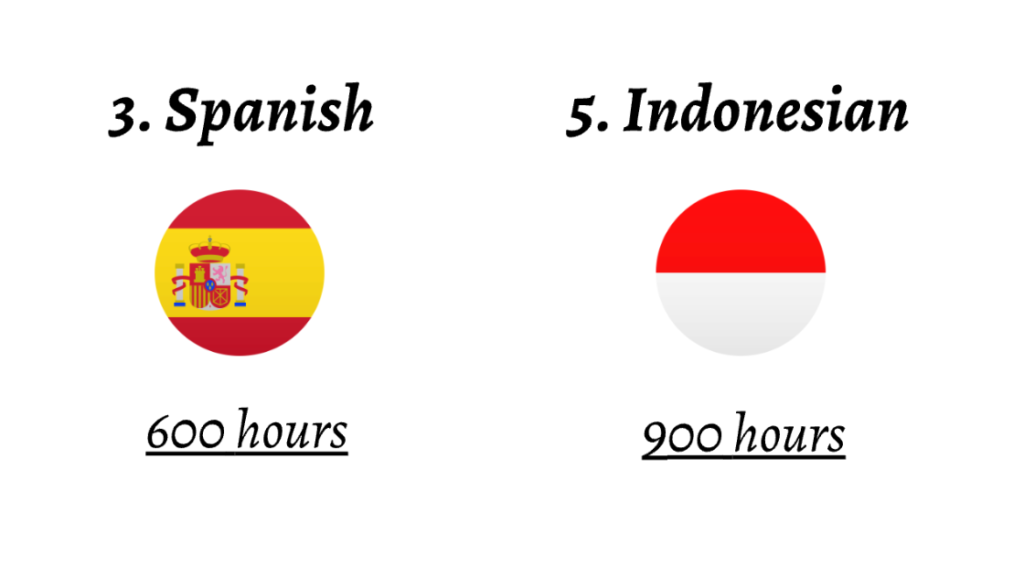Learning a new language can lead to lots of exciting experiences and opportunities, like meeting diverse people, boosting your job prospects, or living and studying abroad. But with so many languages out there, how do you choose which one to learn? While each language has its own difficulties, some are just simpler for English speakers to learn, because languages similar to English have features in common that make them easier to grasp, like sentence structure, vocabulary, sounds and tones, and even the writing system.
If you’re curious which languages you might learn quickly, here are 15 of the easiest languages for English speakers to pick up, ranked from easiest to somewhat more challenging, using data from the Foreign Service Institute (FSI). But remember, consider this just a general guide.
1. Norwegian
Foreign Service Institute Estimate: 24 weeks (600 hours)
Similar to English, Norwegian, or “Norsk,” belongs to the Germanic language family, making it easier for English speakers to learn. It shares many words with English, and unlike some other Germanic languages, Norwegian pronunciation is generally straightforward. The sentence structure is quite similar to English as well, although not exactly the same. For example, “He comes from Norway” translates to “Han kommer fra Norge.”
Norwegian is spoken by about 5 million people, mostly in Norway. With its origins in Old Norse, it can be an intriguing language to learn, offering access to Norway’s rich literary culture and mythology.
2. Swedish
Foreign Service Institute Estimate: 24 weeks (600 hours)
Swedish is relatively easy for English speakers to learn because it’s also, you guessed it, a Germanic language. While mastering the pronunciation might take some practice, Swedish grammar and sentence structure aren’t too complex.
However, there are a few challenging parts to learning the Swedish language language, such as adjusting to its three additional vowels. You’ll also encounter unfamiliar compound words like “jordnötter,” which means peanuts but translates to “dirt nuts,” or “kofångare,” which means bumper but translates to “cow catcher.”
3. Spanish
Foreign Service Institute Estimate: 24 weeks (600 hours)
Despite being a Romance language , Spanish is quite manageable for English speakers to pick up because many English words have Latin roots. Additionally, Spanish shares the same alphabet as English, and most words are pronounced as they’re spelled.
Another advantage of learning Spanish for English speakers is that the sentence structure is not only similar to English but also less rigid. This flexibility means there are often multiple ways to construct a sentence.
4. Dutch
Foreign Service Institute Estimate: 24 weeks (600 hours)
Dutch is closely linked to English. It shares lots of similarities with English, particularly in vocabulary. For example, words like “plastic,” “water,” and “lamp” are the same in both Dutch and English. The trickiest part for English speakers learning Dutch is likely to be the pronunciation.
5. Portuguese
Foreign Service Institute Estimate: 24 weeks (600 hours)
Like Spanish, Portuguese has its roots in Latin and shares the same alphabet as English, which can make it somewhat easier for English speakers to learn and understand.
However, it’s important to note that there are notable differences between European Portuguese and Brazilian Portuguese. Everything from pronunciation to vocabulary can vary depending on which version of Portuguese you’re learning.
6. Indonesian
Foreign Service Institute Estimate: 36 weeks (900 hours)
Indonesian differs quite particularly from the Germanic and Romance languages in this list, but it’s surprisingly easy for English speakers to pick up.
For one, Indonesian is phonetic, meaning words are spelled as they sound. Its sentence structure is also similar to English, and its grammar rules are straightforward.
For example, to make a singular word plural, you just repeat the word or add an extra one. So “child” is “anak,” and “children” is “anak-anak.” Simple, isn’t it?
7. Italian
Foreign Service Institute Estimate: 24 weeks (600 hours)
Italian, another Romance language, is relatively easy for English speakers to learn. In fact, many Italian words are already familiar to English speakers, especially those related to food, like “gelato” and “panini,” or others such as “diva,” “solo,” “finale,” or “fiasco.”
Italian and English share a similar sentence structure in most cases, and fortunately, the pronunciation follows logical rules. This means you’ll likely be able to read and pronounce most words correctly once you’ve learned a few basic guidelines.
8. French
Foreign Service Institute Estimate: 30 weeks (750 hours)
French, while a Romance language like Spanish and Italian, can be slightly more challenging to learn due to its tricky pronunciation. For example, “Et toi?” (And you?) is pronounced as “Ay twah” and “Pouvez-vous?” (Can you?) is pronounced as “Poo vay voo”.
However, French does have many similarities with English, especially in vocabulary. This means that once English speakers grasp some basic rules, they can usually pick it up quite quickly.
9. Swahili
Foreign Service Institute Estimate: 24 weeks (600 hours)
If you’ve watched the Disney classic “The Lion King,” you’re already familiar with several Swahili words like “rafiki” (friend) and “simba” (lion). The pronunciation of most Swahili words is quite straightforward, and many are very similar to their English counterparts. For example, “polisi” is “police” and “baiskeli” is “bicycle.”







